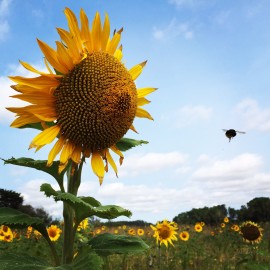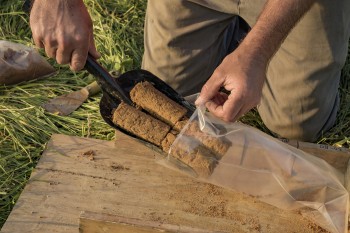Many ideas have been circulated, and there’s anecdotal evidence that some work. Comprehensive research is underway, which will enable scientists to say with more certainty which practices work in New Zealand’s physical environments and farm systems.
Research to fill the evidence gap
Scientists are exploring the effects of a range of farm practices on soil carbon stocks, across New Zealand's varied climate zones, soil types, topographies and land uses. Scientists are looking at both temporal variations, as long-term data are particularly important, and spatial variations, as soil carbon stocks can vary significantly even across a single paddock.
Recent and ongoing research is looking at:
- The potential of greater plant diversity in swards for generally increasing soil carbon and for reducing losses during pasture renewal or production of supplemental feed.
- Growing deep-rooted lucerne under irrigated and unirrigated conditions, including the influence of different grazing regimes.
- Optimising production of supplemental feed to avoid carbon losses during crop establishment and return to pasture. This research also aims to identify soil carbon gains when carbon in supplemental feed is imported into the paddock or farm.
- How integration of space-planted trees of different species affects soil carbon stocks in pasture systems.
 Whether regenerative agriculture could increase soil carbon (small-scale pilot study at this stage).
Whether regenerative agriculture could increase soil carbon (small-scale pilot study at this stage).- Whether full inversion tillage during pasture renewal can bury and stabilise topsoil carbon lower in the soil profile, while carbon is rebuilt at the surface.
- Using measurements and models to investigate how irrigation of grazed pastures influences soil carbon under different soil and climatic conditions across New Zealand.
- Whether a higher water table below farmed peat soils decreases soil carbon losses by increasing the anaerobic zone.
- Identifying which soils have the greatest potential to stabilise soil carbon (at national to farm scales) so that the most promising practices for increasing soil carbon can be targeted to those soils.
See Potential actions for more information. You can also read this New Zealand Geographic article on regenerative agriculture for a helpful summary on its potential impact on soil and the science that is underway to understand the interplay with soil carbon.
Measurement is key
Complementing these research programmes is a new long-term national soil carbon study conducted at 500 locations around New Zealand, which will benchmark soil carbon stocks in different land uses and then monitor how those stocks are changing with time. Initial data will provide a national-scale picture of how much soil carbon is currently stored and, later, whether those stocks are increasing or decreasing.

To accurately measure soil carbon, precise sampling methods must be followed.
Some farmers may wish to benchmark or monitor soil carbon stocks on their own property. However, the process for robust measurements can be difficult and expensive depending on farmers’ precise objectives. If you're contemplating on-farm measurement, see the Measuring soil carbon page.
Researching, benchmarking and monitoring in New Zealand are critical, because the factors affecting farmers' ability to maintain or increase soil carbon stocks in this country are unusual. Not only are our climate, soils and topography like few other places on earth, but our soils already hold comparatively high stocks of carbon (see the Soil carbon page for more information).
From this high starting point, it's much harder to increase soil carbon stocks than it is in some other parts of the world. Actions that might be succeeding elsewhere, won't necessarily work here.
Ag Matters will provide updates as the research and benchmarking/monitoring study progress. You can sign up to receive email alerts whenever new content is posted.

